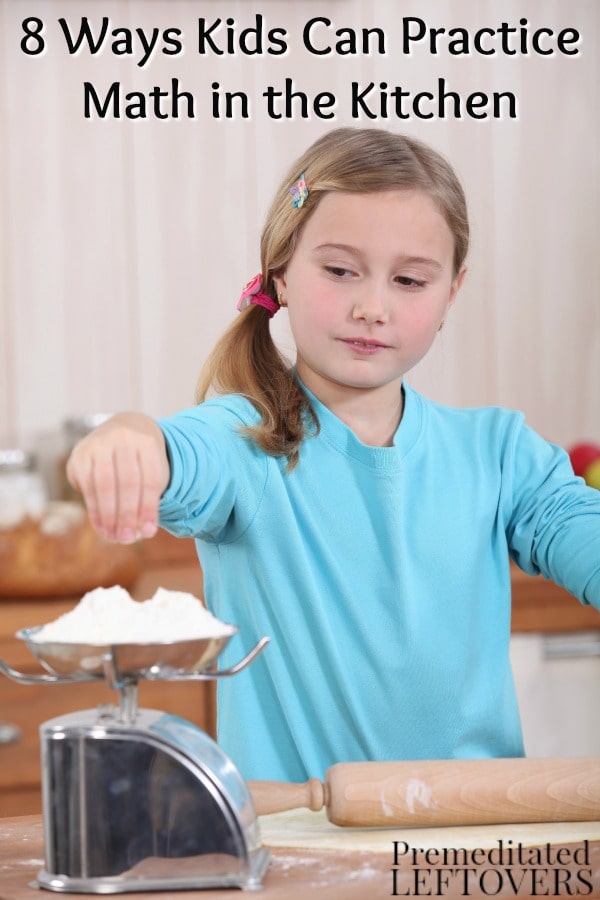Cooking and baking are great ways to let your kids brush up on their math skills. Give it a try with these 8 Ways Kids Can Practice Math in the Kitchen.
Do you have kids begging to help you in the kitchen? Kids love to help cook, but we may be hesitant because it might slow us down or make a mess. And while both of these scenarios are possible, the truth is the benefits of letting kids help in the kitchen outweighs any of the cons. Mathematics especially is a skill kids can put into practice when they help you cook, so why not give it a try? Take a look below at 8 Ways Kids Can Practice Math in the Kitchen, so you can make your cooking time not just fun but educational as well!
8 Ways Kids Can Practice Math in the Kitchen
1. Pull out the measuring cups. Allow kids to help with measurement using measuring cups and spoons. They can practice reading the measurements, measure the ingredients, and help combine and stir. Getting comfortable with reading and understanding units of measurement is important and this is a great introduction.
2. Let them use the kitchen scale. Kitchen scales can also be used to figure out measurement and weigh ingredients. If you have anyone in the house with dietary restrictions, you know how important a kitchen scale is. Teach children the proper use and how to correctly use the scale to figure out measurements.
3. Allow them to read the recipe card measurements. Let children help by reading the recipe card to you. This way they are practicing reading measurements and comprehending them. If you are using an online recipe, just print it off for easy reading and reference.
4. Practice doubling a recipe. Many times you will need to double a recipe in order to feed a crowd. Knowing how to double measurements is vital. Practice doubling ingredients so children can get the feel for adding up measurements when creating large recipes.
5. Use nutrition labels to count calories, fat, fiber, etc. Show children where nutrition labels can be found. This way they can see what they are eating and measure how healthy it is. Understanding measurements of the nutrients in their food can help them make healthier choices in the future. Talk about the units of measurement most of these labels use, which tends to be grams and milligrams.
6. Allow them to set the cooking timer. Telling time is an important skill when cooking. Show children how to set the kitchen timer or clock so their recipe doesn’t burn or come out under cooked. If no timer is available show them how to use a regular clock to figure out what time the recipe should come out.
7. Practice using a thermometer. Understanding how to read a candy or meat thermometer helps you enjoy safe to eat food. Practice reading a thermometer and help children understand these units of measurement so they can make sure food is prepared as it should be.
8. Use a calendar to label food. If doing any batch cooking, you want to mark your food items so you know when they were made and how long they are good for. Practice reading a calendar so kids can figure out the current date and the expiration date of the product they made.
Are you ready to teach math in the kitchen? As you can see there are so many skills to tackle. So pull out a recipe, grab the aprons, and let the kids have some tasty and educational fun.
More Kitchen Activities for Kids:
11 Ways Kids Can Help in the Kitchen
10 Science Experiment Ideas You Can Do in the Kitchen
7 Reasons to Let Kids Help with Holiday Baking


Leave a Reply